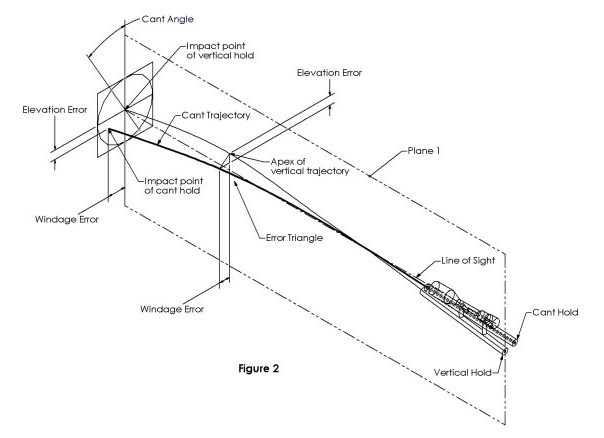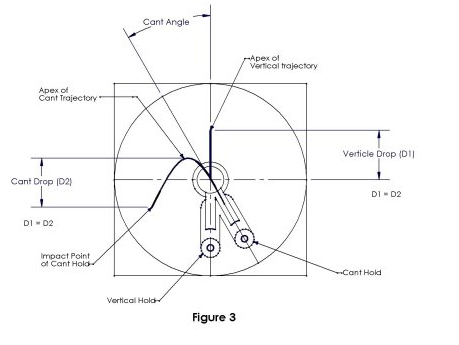T
timmy
Guest
Shoot at reasonable hunting distances and it’s not an issue.
Follow along with the video below to see how to install our site as a web app on your home screen.
Note: This feature may not be available in some browsers.
In rugged country if I'm not squared up and vertical with the force of gravity before taking the shot I'll be tumbling down the mountain after recoil finishes with me.That's all fine and dandy until you're in rugged terrain and the gun being squared up to you doesn't mean much.
As to the OP's original post, I think for most shooters it just really isn't necessary. 300 yards is a long shot for a lot of guys, and the rifle being a few degrees out of level doesnt really amount to much at the ranges most guys are shooting.
is it really not an issue at 350 yards?Shoot at reasonable hunting distances and it’s not an issue.
I’ve shot targets well beyond that never been an issue for me.is it really not an issue at 350 yards?
Let's say I have the personal ability to shoot a 6" group at 350. Add some potential error for a hold over (1-2"), maybe a slight cross wind (1-2"), what's the error with a 2 deg off cant? I honestly don't know, but it feels like it's more than either of those other two.
 www.riflescopelevel.com
www.riflescopelevel.com


And if you shoot right hand and are left eye dominate? Pretty much ruins that idea!This.

I think what they are saying is that an unlevel scope won't make the group larger but will move the center of the point of impact to some degree. How much? Not a clue!is it really not an issue at 350 yards?
Let's say I have the personal ability to shoot a 6" group at 350. Add some potential error for a hold over (1-2"), maybe a slight cross wind (1-2"), what's the error with a 2 deg off cant? I honestly don't know, but it feels like it's more than either of those other two.
10 degs is a ton though. 2-5 degrees is I think more the realm of likelihood. It should move the impacts both horizontally and vertically as depicted in the diagrams above.Mountain terrain plays nasty tricks on your brain and it is very difficult to determine level. I have seen this happen time and time again with myself and clients when I used to guide. I've personally set up for shots and checked my level and been WAY off; then leveled the scope to the bubble and thought there was no way it was correct. Standing up behind the gun confirmed the bubble was correct and my brain couldn't sort it out otherwise.
If you limit your shots to 100 yards then Gran Pappy's 30-30 lever action with iron sights will do just fine. [insert "OK BOOMER" meme]
If you're shooting over 300 yards you will benefit from a level.
Here are some real numbers so everyone can stop guessing:
The ballistics app that I use can calculate cant error. Using a standard 308 Win round, scope mounted 1.9" above the bore, a cant of 10 degrees moves the bullet 4.4" at 300 yards, 8.0" at 400 yards, 13.0" at 500 yards.
Would you say the same thing about turrets? Why hold over when you can dial? I fear it adds more uncertainty/error than it takes away.The majority of the impact is horizontal.
Here is data for 5 degrees:
Horizontal Impact:
300 2.2"
400 4.0"
500 6.5"
Vertical Impact:
300 0.1"
400 0.1"
500 0.3"
4" off at 400, compounded with an unstable field position/wind/game movement is not a recipe for success. Making shots is about eliminating uncertainty. You can eliminate the uncertainly of drop with a rangefinder and a drop chart. You can eliminate some of the uncertainty of wind drift with a wind meter and wind chart. If you can eliminate one variable with a level, why wouldn't you do so???
Dialing is absolutely more accurate than holdover. But #1 you need to test your scope to make sure it dials accurately. And #2 you have to be able to keep your composure to dial properly.Would you say the same thing about turrets? Why hold over when you can dial?
Turret caps are not always level to the crosshair.Just one more thing to add to a scope. Sit the rifle in a vice and level it. To level, have the scope base's installed and sit a line level on a base. Next leave it in the vice and add the scope. Sit a line level on top the top turret cap and level the scope on the level rifle; tighten it down level. Take the rifle out of the vice and look through the scope, If the horizontal wire appears level the scope will be level on the rifle unless you are canting the rifle!
I remember back in the 60's I think it was, Herter's came out with a scope with different aiming points, bunch of circles for different ranges! What a mess. Then I see all the line's and dots and garbage in todays scopes and makes me chringe. Some of these scopes are so hard to understand I'd think you need a college degree to use them. When is enough enough?
Well if you scope can't dial accurately then it out.Dialing is absolutely more accurate than holdover. But #1 you need to test your scope to make sure it dials accurately. And #2 you have to be able to keep your composure to dial properly.
#2 may be a moot point. If you can't keep your composure enough to dial then you will probably also pick the wrong dot or whatever for holdover.
Dialing doesn't really take longer than holdover if you make it a part of your system and practice. Less than 5 seconds more time.
Zero stops definitely help with this. They also help with open turrets accidentally getting spun while carrying your rifle in the field. And most importantly they prevent you from making bonehead moves like dialing the wrong direction.And for me, I'll guarantee forget to dial it back at some point. The less I have to do the better, especially during buck fever panic mode.
4" off zero at 400 yards is nothing. A little more than the width of my palm. The boiler room on a deer is the size of a beach ball. I think if the shooter (note that I did not say hunter) is concerned about all those compounding extra instability factors (and he should be), he shouldn't be taking the shot in the first place. Range finder, spotting scopes, wind meter, smart phone loaded with apps, shooting sticks ... am I forgetting anything? Yeah, a team of sherpas to carry all that technocrap and an MIT grad student to figure out how to make it work. I go hunting to be a part of nature ... and get away from the plastic world of digital screens and software.The majority of the impact is horizontal.
Here is data for 5 degrees:
Horizontal Impact:
300 2.2"
400 4.0"
500 6.5"
Vertical Impact:
300 0.1"
400 0.1"
500 0.3"
4" off at 400, compounded with an unstable field position/wind/game movement is not a recipe for success. Making shots is about eliminating uncertainty. You can eliminate the uncertainly of drop with a rangefinder and a drop chart. You can eliminate some of the uncertainty of wind drift with a wind meter and wind chart. If you can eliminate one variable with a level, why wouldn't you do so???